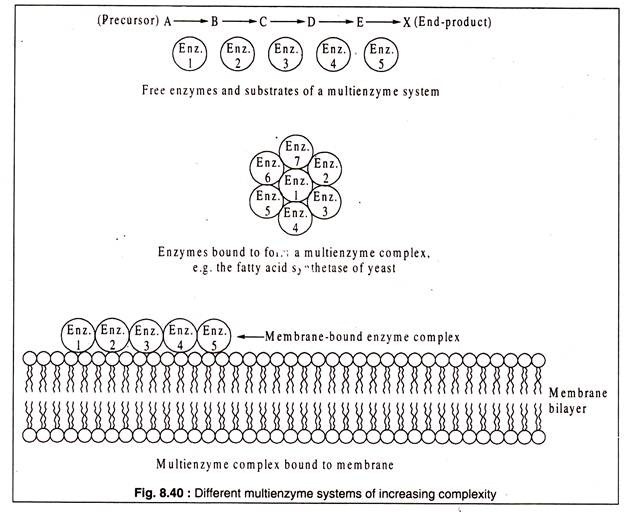ADVERTISEMENTS:
In this article we will discuss about the secondary growth in monocotyledonous stem.
Most monocotyledons consist entirely of primary tissues. The usual vascular cambium is absent from this group and so there is no normal secondary growth. However, in some monocots, the thickening and elongation of stem occurs through primary thickening meristem, diffuse secondary thickening and secondary thickening meristem.
Primary thickening meristem:
ADVERTISEMENTS:
This meristem is observed in palms, in the rhizomes of Musa and in the bulbs of Allium cepa etc. In these plants, the shoot apex is not large and produces only a small part of the primary body. A considerable thickening occurs below the shoot apical meristem. This is due to the intensive cell division of primary thickening meristem.
This meristem lies below the young leaf bases and originates by periclinal division of the cells situated below the region of attachment of young leaf primordia. The meristem appears as a flat zone in longitudinal section of the developing embryo. The zone gradually assumes a concave form in the mature young plant.
The meristem consists of several layer of cells which are rectangular, elongated and oriented parallel to the surface of shoot apex. The derivatives of meristem are the ground parenchyma cells. Sometimes localized mitotic activity within this meristem forms procambial strands, which run horizontal to the surface. These procambial strands gradually mature into vascular bundles.
The term meristematic cap has been coined by Zimmermann and Tomlinson (1976) to designate the zone of procambium formation. Primary thickening meristem contributes mainly to the increase in width of stem and later it causes the elongation of young stem. In palms, Musa and a number of other monocotyledons with a similar growth habit the procambium originates from two sources —the shoot apical meristem and meristematic cap.
ADVERTISEMENTS:
Diffuse secondary thickening:
In palm stem the ground parenchyma cells, close to and distant from the shoot apex (ex. Roystonea, Actinophloeus etc.), expand along with proportional increase of the intercellular spaces, thus causing diffuse secondary growth.
Sometimes these ground parenchyma and the procambium cells, destined to produce the outer fibres of bundle sheath, divide, expand and thus contribute to the diameter of stem. The diffuse secondary thickening occurs after the completion of expansion and elongation caused by primary thickening meristem.
Secondary thickening meristem:
Secondary thickening with this meristem occurs in a number of monocotyledonous species such as, Xanthorrhoea, Dracaena, (Figs. 21.1 & 31.23) Cordyline, Aloe, Yucca, Kingia, Dioscorea etc. This meristem is a type of vascular cambium, which originates in the parenchyma cells present on the peripheral sides of the entire mass of primary vascular bundles.
This region may be the inner layer of cortex or pericycle. Though this lateral meristem is distant from the stem apex, in seedling stages it develops in continuity to the primary thickening meristem. In mature plants these two meristems are found to be discontinuous.
The secondary thickening meristem consists of several tiers of cells that may be of different shapes, such as fusiform, rectangular, polygonal or only with one end tapered. This cambium divides tangentially, some of the peripheral derivatives divide repeatedly and the others form secondary cortex. These parenchyma cells usually remain thin walled and sometimes may contain crystals.
ADVERTISEMENTS:
In Xanthorrhoea these cells secrete resin, which form a sheath around the stem. A large number of tissues are formed to the inner side. The inner tissues form the ground parenchyma and vascular bundles. The ground parenchymatous tissues are termed as conjunctive tissues, which may sometimes become lignified. The secondary vascular bundles remain embedded in the conjunctive tissue.
The bundles are either collateral (e.g. Kingia) or amphivasal (e.g. Dracaena, Aloe etc.). In Kingia, the phloem is surrounded by xylem only on three sides and so in cross section the vascular bundles appear as U-shaped. The xylem consists of small amount xylem parenchyma that may be lignified and tracheids only.
Some localized region of the tiers of cambium is involved in the formation of a single bundle. The conjunctive tissues with embedded secondary vascular bundles show radial arrangement in contrast to primary strands, which are irregularly arranged.
ADVERTISEMENTS:
Protective tissues are developed in the perennial monocotyledons by periderm and storied cork formation.
Periderm is formed with the origin of cork cambium or phellogen and the subsequent formation of phellem and phelloderm from it like dicotyledons. The periderm formation of Dracaena, Aloe and Yucca has no difference than those of dicotyledons.
Storied cork:
It is a special type of protective tissue composed of cells, which are radially arranged in files and have suberized walls. The storied corks are observed in Curcuma, Cordyline and in many palms. These corks are formed by the activity of storied meristem. This meristem originates at the outer cortex. In contrast to phellogen, the storied meristem does not form a regular uninterrupted cylinder.
ADVERTISEMENTS:
The cortical parenchyma cells, which are destined to be the initials of this meristem, become three to eight layered by periclinal division. The derivatives of this meristem become suberized and are termed as storied cork. The cork cells are arranged in irregular tangential bands and radial files.
Sometimes these bands may coalesce tangentially and radially when they enclose some undividing cortical cells, which also become suberized. Thus the storied cork along with enclosed suberized cells form a hard protective tissue (Fig. 21.2).



